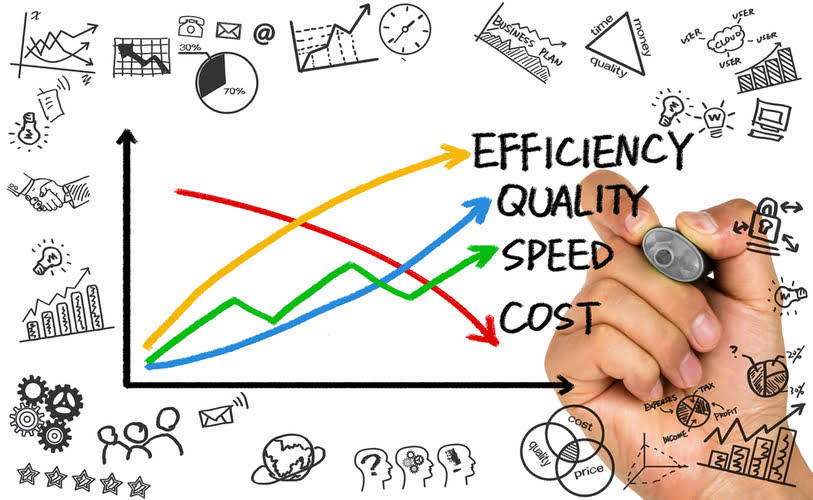
Since they have limited budgets for public infrastructure, they have to consider where the investment will be best for the local (and, by extension, national) economy. One issue that comes up a lot in cost-benefit analysis is incorrectly calculating labor cost savings due to increased productivity. Unless you reduce headcount, paid hours, or overtime, you are not realizing actual cost savings.

This means considering unpredictable costs and understanding expense types and characteristics. This level of analysis only strengthens the findings as more research is performed on the state of outcome for the project that provides better support for strategic planning endeavors. In many models, a cost-benefit analysis will also factor the opportunity cost into the decision-making process. Opportunity costs are alternative benefits that could have been realized when choosing one alternative over another.
Over 200k developers and product managers use LogRocket to create better digital experiences
After working out your comparison, it’s also worth revisiting your framework in step one to make sure that the project is compatible with your goals and your strategy. Next, you’ll have to choose a metric for measuring and comparing your costs and benefits. If you were to conduct a cost benefit analysis, you might find that the project itself is expected to cost you $15,000 in resources. First, you tally up all of the projected or estimated costs you expect to incur over the course of a project, and then add up all the benefits you’re expecting. It is important to take into account the company’s strategy, goals, and constraints when making a decision. It’s not always the case that the highest net value project is the right one to pursue.

One of the steps when executing a cost-benefit analysis includes identifying project stakeholders. You need to list those stakeholders, but our free RACI matrix template takes that one step further by outlining who needs to know what. RACI is an acronym for responsible, accountable, consulted and informed. By filling out this template, you’ll organize your team and stakeholders and keep everyone on the same page.
LogRocket generates product insights that lead to meaningful action
Cost Benefit Analysis determines all costs, expenses related to the project (or product) and all benefits to be gained in terms of money. All direct costs related to production such as material, subcontractor, labor costs, machinery costs are calculated at this the main goal of using a cost-benefit analysis is to reach a step. In addition to that, indirect costs such as insurance, depreciation, supervisor’s salaries, etc. should be added to the costs. Look over the costs and benefits of the project, assign them a monetary value and map them over a relevant time period.
For a company to create value for its stakeholders, it must invest in beneficial projects. After a thorough consideration of all of the benefits and costs, the company can then make the determination whether the project will add value. Lastly, there is a growing recognition of the importance https://www.bookstime.com/articles/business-process-automation of engaging stakeholders in the CBA process. By including stakeholder perspectives, the CBA can provide a more comprehensive and accurate evaluation of the economic feasibility of a project or decision. However, it has its own set of limitations and challenges that need to be addressed.
Cost-Benefit Ratio Formula
To make your calculations as accurate as possible, try comparing costs and benefits from similar projects you’ve completed in the past. They can help you see the real-life economic value of past costs and benefits—plus any items or circumstances you might have overlooked. Using a project management tool can make this step easy—since all of your project information and communications are housed in one place, you can easily look back at past initiatives. To make a fair comparison in your analysis, you need to consider the present value of future costs and benefits.
- It is an analytical tool used to determine the viability of a project or decision by comparing its pros and cons.
- This can make it hard to compare the results of different CBAs, and can make it hard to accurately evaluate the true costs and benefits of a project or decision.
- Toss in dozens of app integrations and some stellar customer service, and you’ll be left wondering why on earth you’d ever want to waste time doing a manual cost benefit analysis ever again.
- In other scenarios, you might also need to calculate the return on investment (ROI), internal rate of return (IRR), net present value (NPV) and the payback period (PBP).
- Based upon these results, you will now be able to make a clear recommendation, grounded in realistic data projections.
- Cost-benefit analysis is important because it helps decision-makers weigh the advantages and disadvantages of a course of action.
This comparison is the heart of your analysis—it shows you which choices give you the most financial upside. This might require some digging into market rates, historical data, or expert forecasts, but it’s worth the effort to get the most accurate picture possible. A BCR greater than 1.0 indicates that the project’s benefits exceed its costs, suggesting it’s a financially viable option. On the other hand, a BCR less than 1.0 means the costs outweigh the benefits, signaling a potential reconsideration of the project. Direct costs to expanding production are readily apparent, for example, the cost of the new factory and additional labor costs. Fourthly, CBA traditionally uses a static analysis that assumes that costs and benefits are constant over time.